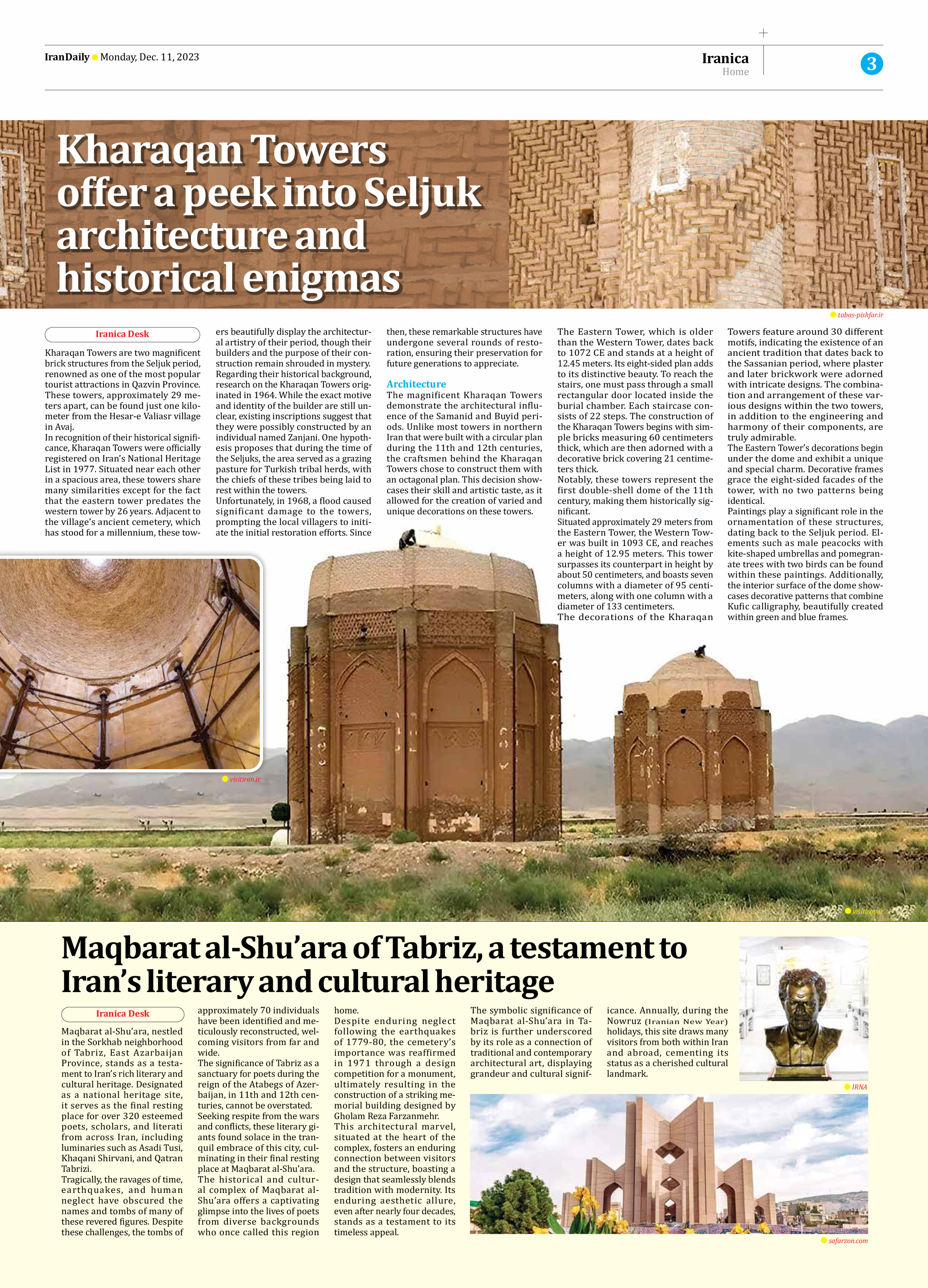
Kharaqan Towers offer a peek into Seljuk architecture and historical enigmas
Kharaqan Towers are two magnificent brick structures from the Seljuk period, renowned as one of the most popular tourist attractions in Qazvin Province. These towers, approximately 29 meters apart, can be found just one kilometer from the Hesar-e Valiasr village in Avaj.
In recognition of their historical significance, Kharaqan Towers were officially registered on Iran’s National Heritage List in 1977. Situated near each other in a spacious area, these towers share many similarities except for the fact that the eastern tower predates the western tower by 26 years. Adjacent to the village’s ancient cemetery, which has stood for a millennium, these towers beautifully display the architectural artistry of their period, though their builders and the purpose of their construction remain shrouded in mystery.
Regarding their historical background, research on the Kharaqan Towers originated in 1964. While the exact motive and identity of the builder are still unclear, existing inscriptions suggest that they were possibly constructed by an individual named Zanjani. One hypothesis proposes that during the time of the Seljuks, the area served as a grazing pasture for Turkish tribal herds, with the chiefs of these tribes being laid to rest within the towers.
Unfortunately, in 1968, a flood caused significant damage to the towers, prompting the local villagers to initiate the initial restoration efforts. Since then, these remarkable structures have undergone several rounds of restoration, ensuring their preservation for future generations to appreciate.
Architecture
The magnificent Kharaqan Towers demonstrate the architectural influence of the Samanid and Buyid periods. Unlike most towers in northern Iran that were built with a circular plan during the 11th and 12th centuries, the craftsmen behind the Kharaqan Towers chose to construct them with an octagonal plan. This decision showcases their skill and artistic taste, as it allowed for the creation of varied and unique decorations on these towers.
The Eastern Tower, which is older than the Western Tower, dates back to 1072 CE and stands at a height of 12.45 meters. Its eight-sided plan adds to its distinctive beauty. To reach the stairs, one must pass through a small rectangular door located inside the burial chamber. Each staircase consists of 22 steps. The construction of the Kharaqan Towers begins with simple bricks measuring 60 centimeters thick, which are then adorned with a decorative brick covering 21 centimeters thick.
Notably, these towers represent the first double-shell dome of the 11th century, making them historically significant.
Situated approximately 29 meters from the Eastern Tower, the Western Tower was built in 1093 CE, and reaches a height of 12.95 meters. This tower surpasses its counterpart in height by about 50 centimeters, and boasts seven columns with a diameter of 95 centimeters, along with one column with a diameter of 133 centimeters.
The decorations of the Kharaqan Towers feature around 30 different motifs, indicating the existence of an ancient tradition that dates back to the Sassanian period, where plaster and later brickwork were adorned with intricate designs. The combination and arrangement of these various designs within the two towers, in addition to the engineering and harmony of their components, are truly admirable.
The Eastern Tower’s decorations begin under the dome and exhibit a unique and special charm. Decorative frames grace the eight-sided facades of the tower, with no two patterns being identical.
Paintings play a significant role in the ornamentation of these structures, dating back to the Seljuk period. Elements such as male peacocks with kite-shaped umbrellas and pomegranate trees with two birds can be found within these paintings. Additionally, the interior surface of the dome showcases decorative patterns that combine Kufic calligraphy, beautifully created within green and blue frames.







